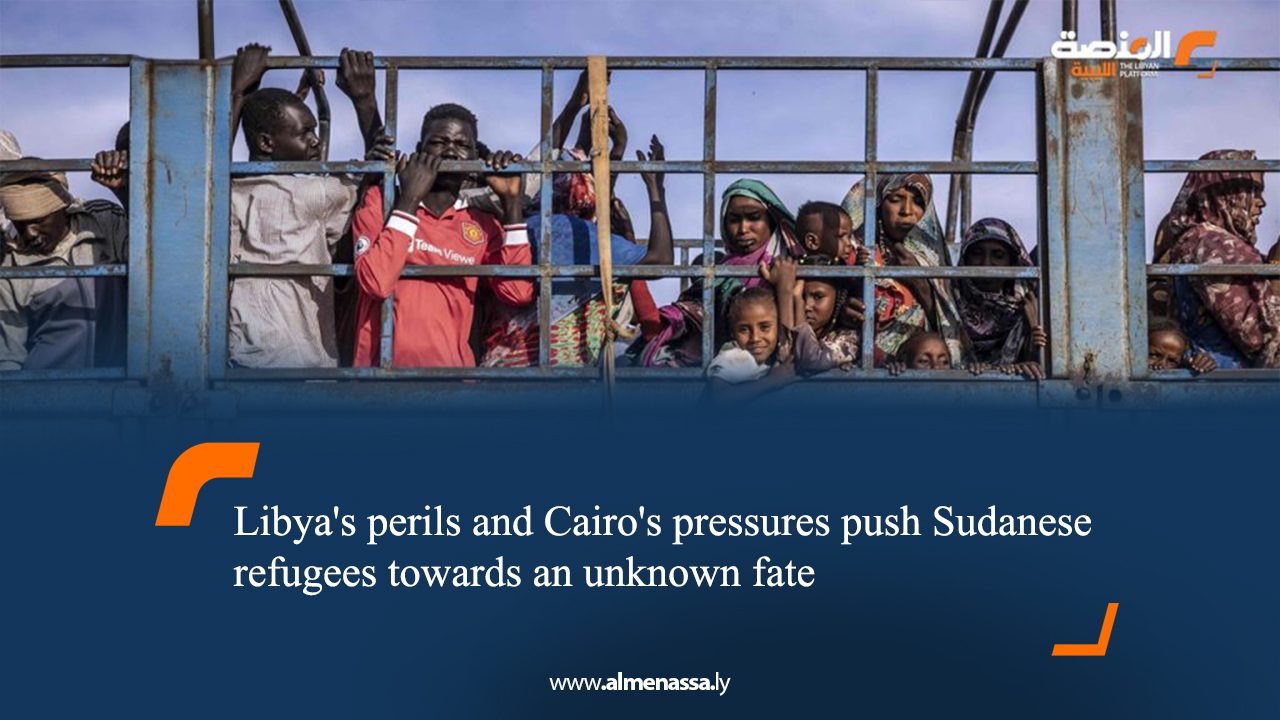As the devastating civil war in Sudan has continued since April 2023, over 4 million people have fled to neighbouring countries, with a significant proportion finding themselves caught between difficult realities in Libya and Egypt. While Egypt has hosted over 1.5 million Sudanese refugees, escalating economic pressures, tightened security measures, and poor living conditions have driven many to seek an alternative route via the western border towards Libya, and from there to Europe through perilous migration paths.
Alarming statistics and rising arrivals:
According to data from the UN Refugee Agency (UNHCR), the number of Sudanese arrivals in Europe surged by 134% during the first five months of 2025 compared to the same period last year, despite a general decrease in migrants from North Africa.
Libyan security sources indicated that between 20,000 and 25,000 Sudanese refugees have crossed the border into eastern Libya since the conflict began in their country, most arriving from Egyptian territory. The current weekly crossing rate is estimated at 200 to 250 individuals, with expectations of a significant increase during the summer.
Despite Libya posing grave dangers to migrants due to the presence of armed militias and arbitrary, unlawful detention centres, many Sudanese view it as the sole gateway to Europe, especially after prospects within Egypt have diminished.
Challenges of residency in Egypt and legal shifts:
In Egypt, with the substantial increase in Sudanese seeking asylum, many have complained of extreme difficulty in obtaining legal residency, particularly after high fees, exceeding $1,000, were imposed for official permits. Furthermore, a new asylum law came into effect in 2024, placing all refugee files under the direct supervision of the Egyptian government, rather than UNHCR.
This legal shift, according to human rights activists and lawyers, has been accompanied by a worrying escalation in arrests and deportations, even for those holding UNHCR documents. This has been corroborated by prominent human rights organisations such as Amnesty International, which described detention conditions as inhumane and violating international human rights standards.
In a recent statistic from the European Border and Coast Guard Agency (Frontex), Sudanese were among the top three nationalities who took the Eastern Mediterranean route via Libya to Greece, with over 1,469 migrants arriving by May 2025, compared to 361 in the same period last year, reflecting increasing reliance on these dangerous routes.
Political leverage and European funding:
Despite repeated official denials from the Egyptian government, human rights groups assert that the migration file is being used as political leverage by Cairo to secure substantial financial support from the European Union. In March 2025, the EU announced a massive funding package of €7.4 billion for Egypt, aimed at supporting its stated efforts to curb irregular migration.
However, internal reports from the European Commission, reviewed by Reuters, revealed that most refugees in Egypt receive no social support or health protection, leaving them vulnerable to marginalisation and extreme poverty, and pushing them to risk travelling to European countries in search of a better life.
The sea route from Libya to Europe: limited options and severe risks:
For the vast majority of Sudanese refugees, returning to Sudan is not an option due to the ongoing fighting and catastrophic security conditions. Remaining in Egypt or Libya is fraught with humanitarian suffering or life-threatening dangers, forcing them to confront a harsh and arduous journey towards Europe, despite the grave risks of drowning, detention in dire conditions, or forced deportation.
With the rise of far-right rhetoric and stringent deportation policies in Europe, refugees find themselves trapped between three bitter choices: waiting indefinitely, fleeing aimlessly, or submitting to laws that offer them insufficient protection and fail to guarantee their human dignity.


